SNVS699H February 2011 – January 2015 LM5045
PRODUCTION DATA.
- 1 Features
- 2 Applications
- 3 Description
- 4 Revision History
- 5 Pin Configuration and Functions
- 6 Specifications
-
7 Detailed Description
- 7.1 Overview
- 7.2 Functional Block Diagram
- 7.3
Feature Description
- 7.3.1 High-Voltage Start-Up Regulator
- 7.3.2 Line Undervoltage Detector
- 7.3.3 Overvoltage Protection
- 7.3.4 Reference
- 7.3.5 Oscillator, Sync Input
- 7.3.6 Cycle-by-Cycle Current Limit
- 7.3.7 Hiccup Mode
- 7.3.8 PWM Comparator
- 7.3.9 Ramp Pin
- 7.3.10 Slope Pin
- 7.3.11 Soft-Start
- 7.3.12 Gate Driver Outputs
- 7.3.13 Synchronous Rectifier Control Outputs (SR1 and SR2)
- 7.3.14 Soft-Start of the Synchronous Rectifiers
- 7.3.15 Prebias Startup
- 7.3.16 Soft-Stop
- 7.3.17 Soft-Stop Off
- 7.3.18 Thermal Protection
- 7.4 Device Functional Modes
- 8 Application and Implementation
- 9 Power Supply Recommendations
- 10Layout
- 11Device and Documentation Support
- 12Mechanical, Packaging, and Orderable Information
封装选项
机械数据 (封装 | 引脚)
散热焊盘机械数据 (封装 | 引脚)
- PWP|28
订购信息
6 Specifications
6.1 Absolute Maximum Ratings (1)
| MIN | MAX | UNIT | |
|---|---|---|---|
| VIN to GND | –0.3 | 105 | V |
| HS to GND(2) | –5 | 105 | V |
| BST1/BST2 to GND | –0.3 | 116 | V |
| BST1/BST2 to HS1/HS2 | –0.3 | 16 | V |
| HO1/HO2 to HS1/HS2(1) | –0.3 | BST1/BST2 + 0.3 | V |
| LO1/LO2/SR1/SR2(1) | –0.3 | VCC + 0.3 | V |
| VCC to GND | –0.3 | 16 | V |
| REF,SSOFF,RT,OVP,UVLO to GND | –0.3 | 7 | V |
| RAMP | –0.3 | 7 | V |
| COMP | –0.3 | V | |
| COMP Input Current | 10 | mA | |
| All other inputs to GND(1) | –0.3 | REF + 0.3 | V |
| Junction Temperature | 150 | °C | |
| Storage temperature, Tstg | –55 | 150 | °C |
(1) Absolute Maximum Ratings are limits beyond which damage to the device may occur. Operating Ratings are conditions under which operation of the device is intended to be functional. For ensured specifications and test conditions, see the Electrical Characteristics.
6.2 ESD Ratings
| VALUE | UNIT | |||
|---|---|---|---|---|
| V(ESD) | Electrostatic discharge | Human body model (HBM), per ANSI/ESDA/JEDEC JS-001(1) | ±2000 | V |
| Charged-device model (CDM), per JEDEC specification JESD22-C101(2) | ±750 | |||
(1) JEDEC document JEP155 states that 500-V HBM allows safe manufacturing with a standard ESD control process.
(2) JEDEC document JEP157 states that 250-V CDM allows safe manufacturing with a standard ESD control process.
6.3 Recommended Operating Conditions
over operating free-air temperature range (unless otherwise noted)| MIN | NOM | MAX | UNIT | ||
|---|---|---|---|---|---|
| VIN Voltage | 14 | 100 | V | ||
| External Voltage Applied to VCC | 10 | 14 | V | ||
| Junction Temperature | –40 | 125 | °C | ||
| SLOPE | –0.3 | 2 | V | ||
6.4 Thermal Information
| THERMAL METRIC(1) | LM5045 | UNIT | ||
|---|---|---|---|---|
| PWP | RSG | |||
| 28 PINS | ||||
| RθJA | Junction-to-ambient thermal resistance | 40 | 40 | °C/W |
| RθJC(top) | Junction-to-case (top) thermal resistance | 4 | 4 | |
(1) For more information about traditional and new thermal metrics, see the IC Package Thermal Metrics application report, SPRA953.
6.5 Electrical Characteristics
Limits in standard typeface are for TJ = 25°C only; MIN and MAX limits apply the junction temperature range of –40°C to 125°C. Unless otherwise specified, the following conditions apply: VIN = 48 V, RT = 25 kΩ, RD1 = RD2 = 20 kΩ. No load on HO1, HO2, LO1, LO2, SR1, SR2, COMP = 0 V, UVLO = 2.5 V, OVP = 0 V, SSOFF = 0 V.| PARAMETER | TEST CONDITIONS | MIN | TYP | MAX | UNIT | |
|---|---|---|---|---|---|---|
| START-UP REGULATOR (VCC PIN) | ||||||
| VCC1 | VCC voltage | ICC= 10 mA (SSSR < 1 V) | 9.3 | 9.6 | 9.9 | V |
| VCC2 | VCC voltage | ICC= 10 mA (SSSR > 1 V) | 7.5 | 7.8 | 8.1 | V |
| ICC(Lim) | VCC current limit | VCC= 6 V | 60 | 80 | mA | |
| ICC(ext) | VCC supply current | Supply current into VCC from an externally applied source. VCC = 10 V | 4.6 | mA | ||
| VCC load regulation | ICC from 0 to 50 mA | 35 | mV | |||
| VCC(UV) | VCC undervoltage threshold | Positive going VCC | VCC1–0.2 | VCC1–0.1 | V | |
| Negative going VCC | 5.9 | 6.3 | 6.7 | V | ||
| IIN | VIN operating current | 4 | mA | |||
| VIN shutdown current | VIN = 20 V, VUVLO = 0 V | 300 | 520 | µA | ||
| VIN = 100 V, VUVLO = 0 V | 350 | 550 | µA | |||
| VIN start-up regulator leakage | VCC=10 V | 160 | µA | |||
| VOLTAGE REFERENCE REGULATOR (REF PIN) | ||||||
| VREF | REF voltage | IREF = 0 mA | 4.85 | 5 | 5.15 | V |
| REF voltage regulation | IREF = 0 to 10 mA | 25 | 50 | mV | ||
| IREF(Lim) | REF current limit | VREF = 4.5 V | 15 | 20 | mA | |
| VREFUV | VREF undervoltage threshold | Positive going VREF | 4.3 | 4.5 | 4.7 | V |
| Hysteresis | 0.25 | V | ||||
| UNDERVOLTAGE LOCK OUT AND SHUTDOWN (UVLO PIN) | ||||||
| VUVLO | Under-voltage threshold | 1.18 | 1.25 | 1.32 | V | |
| IUVLO | Hysteresis current | UVLO pin sinking current when VUVLO < 1.25 V | 16 | 20 | 24 | µA |
| Undervoltage standby enable threshold | UVLO voltage rising | 0.32 | 0.4 | 0.48 | V | |
| Hysteresis | 0.05 | V | ||||
| VOVP | OVP shutdown threshold | OVP rising | 1.18 | 1.25 | 1.32 | V |
| OVP hysteresis current | OVP sources current when OVP > 1.25 V | 16 | 20 | 24 | µA | |
| SOFT-START (SS PIN) | ||||||
| ISS | SS charge current | VSS = 0 V | 16 | 20 | 24 | µA |
| SS threshold for SSSR charge current enable | ICOMP < 800 µA | 1.93 | 2 | 2.2 | V | |
| SS output low voltage | Sinking 100 µA | 40 | mV | |||
| SS threshold to disable switching | 200 | mV | ||||
| ISSSR | SSSR charge current | VSS > 2 V, ICOMP < 800 µA | 16 | 20 | 24 | µA |
| ISSSR-DIS1 | SSSR discharge current 1 | VUVLO < 1.25 V | 54 | 65 | 75 | µA |
| ISSSR-DIS2 | SSSR discharge current 2 | VRES > 1 V | 109 | 125 | 147 | µA |
| SSSR output low voltage | Sinking 100 µA | 50 | mV | |||
| SSSR threshold to enable SR1/SR2 | 1.2 | V | ||||
| CURRENT SENSE INPUT (CS PIN) | ||||||
| VCS | Current limit threshold | 0.71 | 0.75 | 0.785 | V | |
| CS delay to output | 65 | ns | ||||
| CS leading edge blanking | 50 | ns | ||||
| RCS | CS sink impedance (clocked) | Internal FET sink impedance | 18 | 45 | Ω | |
| SOFT-STOP DISABLE (SS OFF PIN) | ||||||
| VIH(min) | SSOFF Input-threshold | 2.8 | V | |||
| SSOFF pulldown resistance | 200 | kΩ | ||||
| CURRENT LIMIT RESTART (RES Pin) | ||||||
| RRES | RES pulldown resistance | Termination of hiccup timer | 37 | Ω | ||
| VRES | RES hiccup threshold | 1 | V | |||
| RES upper counter threshold | 4 | V | ||||
| RES lower counter threshold | 2 | V | ||||
| IRES-SRC1 | Charge current source 1 | VRES < 1 V, VCS> 750 mV | 30 | µA | ||
| IRES-SRC2 | Charge current source 2 | 1 V < VRES < 4 V | 10 | µA | ||
| IRES-DIS2 | Discharge current source 1 | VCS < 750 mV | 5 | µA | ||
| IRES-DIS2 | Discharge current source 2 | 2 V < VRES < 4 V | 5 | µA | ||
| Ratio of time in hiccup mode to time in current limit | VRES > 1 V, Hiccup counter | 147 | ||||
| VOLTAGE FEED-FORWARD (RAMP PIN) | ||||||
| RAMP sink impedance (Clocked) | 5.5 | 20 | Ω | |||
| OSCILLATOR (RT PIN) | ||||||
| FSW1 | Frequency (LO1, half oscillator frequency) | RT = 25 kΩ | 185 | 200 | 215 | kHz |
| FSW2 | Frequency (LO1, half oscillator frequency) | RT = 10 kΩ | 420 | 480 | 540 | kHz |
| DC level | 2 | V | ||||
| RT sync threshold | 2.8 | 3 | 3.3 | V | ||
| SYNCHRONOUS RECTIFIER TIMING CONTROL (RD1 and RD2 PINS) | ||||||
| T1 | SR trailing edge delay SR turnoff to HO&LO both on |
RD1 = 20 kΩ | 45 | 65 | 90 | ns |
| RD1 = 100 kΩ | 232 | 300 | 388 | ns | ||
| T2 | SR leading edge HO or LO turnoff to SR turnon |
RD2 = 20 kΩ | 43 | 65 | 90 | ns |
| RD2 = 100 kΩ | 227 | 300 | 384 | ns | ||
| COMP PIN | ||||||
| VPWM-OS | COMP current to RAMP offset | VRAMP = 0 V | 680 | 800 | 940 | µA |
| VSS-OS | SS to RAMP offset | VRAMP = 0 V | 0.78 | 1.0 | 1.22 | V |
| COMP current to RAMP gain | ΔRAMP/ΔICOMP | 2400 | Ω | |||
| SS to RAMP gain | ΔSS/ΔRAMP | 0.5 | ||||
| COMP current for SSSR charge current enable | VSS > 2 V | 690 | 800 | 915 | µA | |
| COMP to output delay | 120 | ns | ||||
| Minimum duty cycle | ICOMP = 1 mA | 0% | ||||
| SLOPE COMPENSATION (SLOPE PIN) | ||||||
| ISLOPE | Slope compensation current ramp | Peak of RAMP current | 100 | µA | ||
| BOOST (BST PIN) | ||||||
| VBst uv | BST under-voltage threshold | VBST – VHS rising | 3.8 | 4.7 | 5.6 | V |
| Hysteresis | 0.5 | V | ||||
| HO1, HO2, LO1, LO2 GATE DRIVERS | ||||||
| VOL | Low-state output voltage | IHO/LO = 100 mA | 0.16 | 0.32 | V | |
| VOH | High-state output voltage | IHO/LO = 100 mA VOHL = VCC – VLO VOHH = VBST – VHO |
0.27 | 0.495 | V | |
| Rise Time | C-load = 1000 pF | 16 | ns | |||
| Fall Time | C-load = 1000 pF | 11 | ns | |||
| IOHL | Peak Source Current | VHO/LO = 0 V | 1.5 | A | ||
| IOLL | Peak Sink Current | VHO/LO = VCC | 2 | A | ||
| SR1, SR2 GATE DRIVERS | ||||||
| VOL | Low-state output voltage | ISR1/SR2 = 10 mA | 0.05 | 0.1 | V | |
| VOH | High-state output voltage | ISR1/SR2 = 10 mA, VOH = VREF – VSR |
0.17 | 0.28 | V | |
| Rise Time | C-load = 1000 pF | 60 | ns | |||
| Fall Time | C-load = 1000 pF | 20 | ns | |||
| IOHL | Peak Source Current | VSR = 0 V | 0.1 | A | ||
| IOLL | Peak Sink Current | VSR = VREF | 0.4 | A | ||
| THERMAL SHUTDOWN | ||||||
| TSD | Thermal Shutdown Temp | 160 | °C | |||
| Thermal Shutdown Hysteresis | 25 | °C | ||||
(1) These pins are output pins and as such should not be connected to an external voltage source. The voltage range listed is the limits the internal circuitry is designed to reliably tolerate in the application circuit.
(2) The negative HS voltage must never be more negative than VCC–16 V. For example, if VCC = 12 V, the negative transients at HS must not exceed –4 V.
6.6 Typical Characteristics
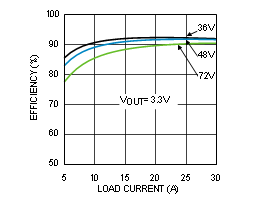 Figure 1. Application Board Efficiency
Figure 1. Application Board Efficiency
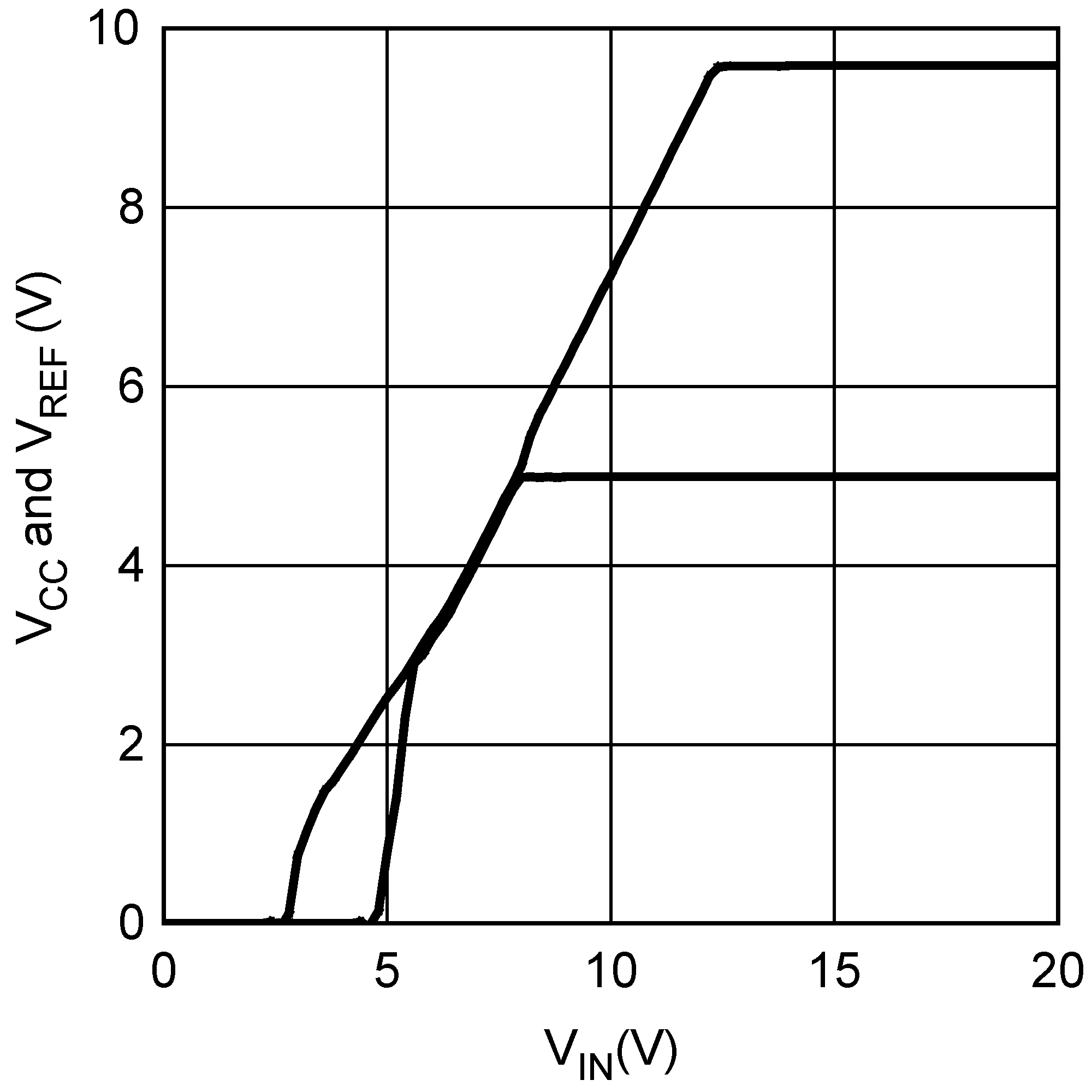 Figure 3. VCC and VREF vs VIN
Figure 3. VCC and VREF vs VIN
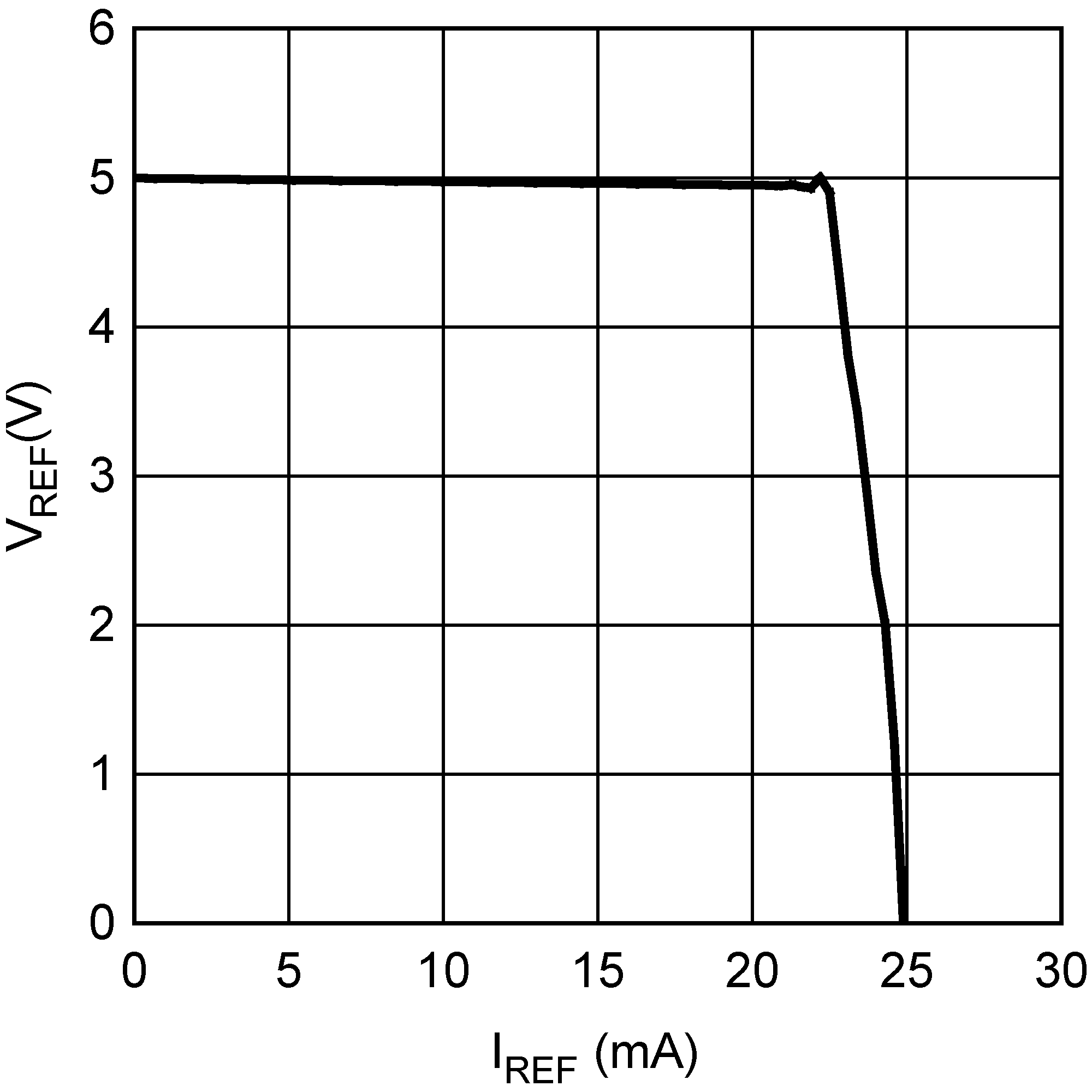 Figure 5. VREF vs IREF
Figure 5. VREF vs IREF
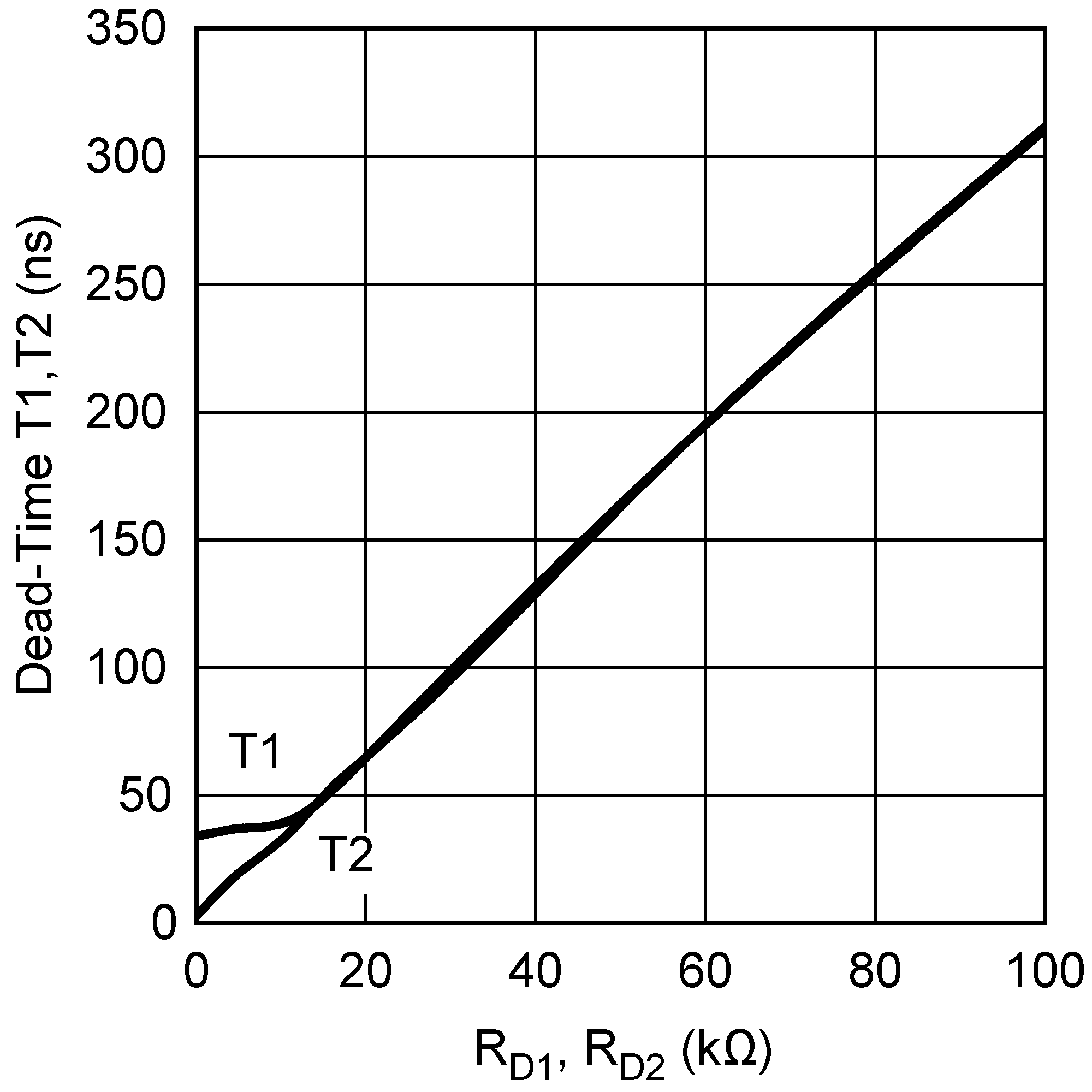 Figure 7. Dead-Time T1, T2 vs RD1, RD2
Figure 7. Dead-Time T1, T2 vs RD1, RD2
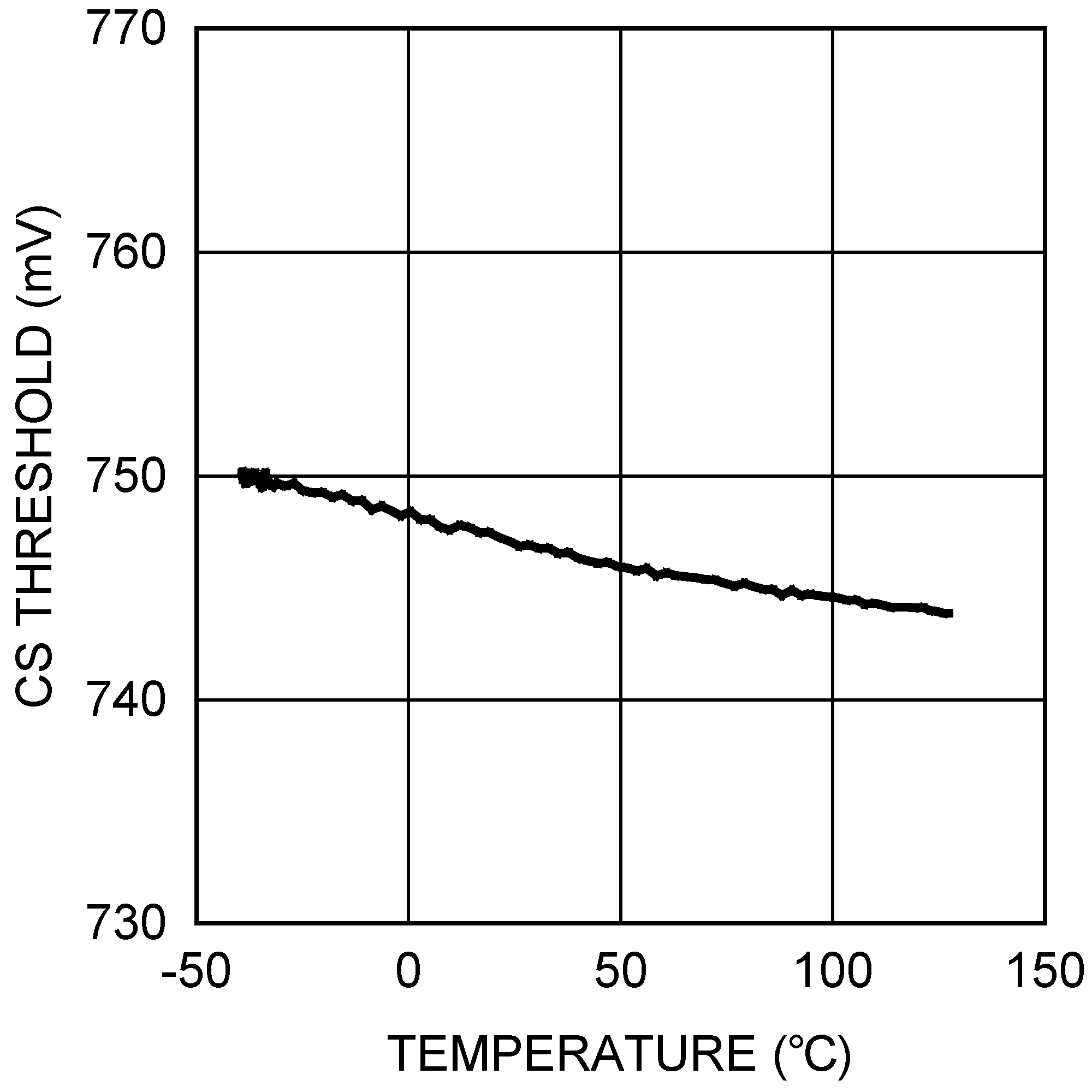 Figure 9. CS Threshold vs Temperature
Figure 9. CS Threshold vs Temperature
 Figure 2. VCC vs ICC
Figure 2. VCC vs ICC
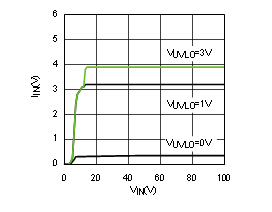 Figure 4. IIN vs VIN
Figure 4. IIN vs VIN
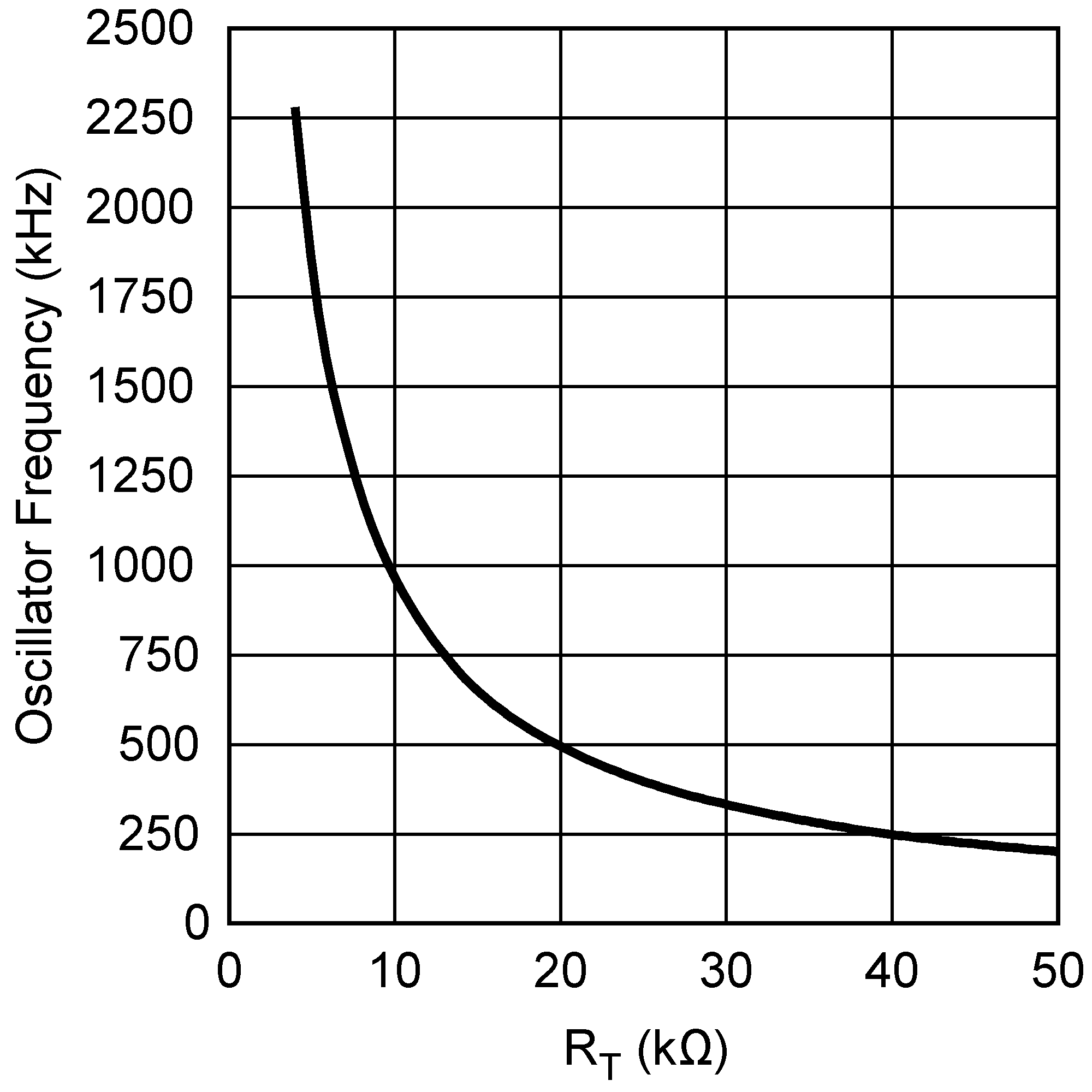 Figure 6. Oscillator Frequency vs RT
Figure 6. Oscillator Frequency vs RT
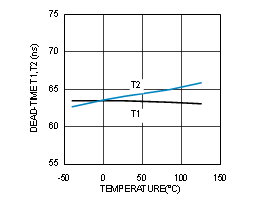 Figure 8. Dead-Time T1, T2 vs. Temperature
Figure 8. Dead-Time T1, T2 vs. Temperature